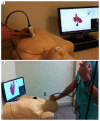Simulation-a new educational paradigm?
- PMID: 23554798
- PMCID: PMC3602865
- DOI: 10.7555/JBR.27.20120107
Simulation-a new educational paradigm?
Abstract
Simulation is a modern educational tool that has recently gained in the field of medical education. The use of simulation continues to expand, and studies evaluating the effectiveness of simulation-based medical education are ongoing. The history of medical education and adult educational theory are reviewed, and the details of effective simulation techniques are described. Finally, outcomes of simulation-based medical education are summarized.
Keywords: education; outcomes; simulation.
Conflict of interest statement
The authors reported no conflict of interests.
Figures




References
-
- Cooke M, Irby DM, Sullivan W, Ludmerer KM. American medical education 100 years after the Flexner report. N Engl J Med. 2006;355:1339–44. - PubMed
-
- Wachter RM. The end of the beginning: patient safety five years after “To Err is Human”. Health Aff (Millwood) 2004;23(S2 Web Exclusives):W4-534–45. - PubMed
-
- Carroll JD, Messenger JC. Medical simulation-the new tool for training and skills assessment. Perspectives in Biology and Medicine. 2008;51:47–60. - PubMed
-
- Bryan R, Kreuter M, Brownson R. Integrating adult learning principles into training for public health practice. Health Promot Pract. 2000;10:557–63. - PubMed
LinkOut - more resources
Full Text Sources
Other Literature Sources

